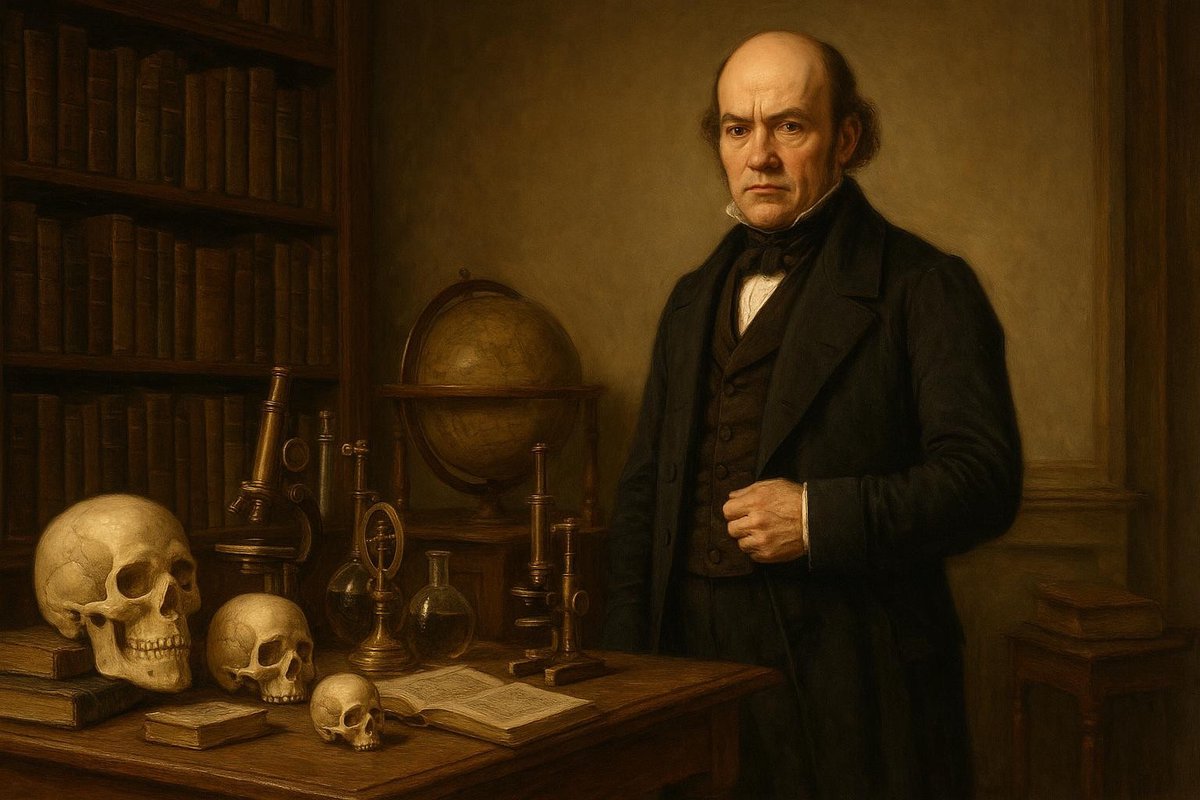
Imagine a world where the contours of your skull could determine your intelligence and character. In the early 19th century, this was not just a whimsical notion but a widely accepted belief, thanks to the controversial science of phrenology. But was it truly a scientific breakthrough, or merely a constructed idea that caught the public’s imagination?
Early Influences
Franz Joseph Gall, the man behind phrenology, was a thinker whose ideas were shaped by the vibrant intellectual landscape of late 18th-century Europe. Born in 1758 in Germany, Gall was fascinated by the brain’s role in shaping personality and behavior. At a time when scientific inquiry was taking bold new strides, his curiosity led him to question existing norms.
- Gall was influenced by the Enlightenment’s emphasis on reason and empirical evidence.
- He observed classmates with prominent eyes excelling at memorization, leading him to hypothesize about brain functions.
- Gall’s ideas resonated with the burgeoning interest in linking physical traits to mental faculties.
Interestingly, Gall’s approach was more intuitive than rigorous, relying on anecdotal observations rather than systematic experiments. Yet, his theory of cranial bumps captivated a society eager to decode the human mind.
Mental Models
Gall’s mental model of the brain as a puzzle of distinct faculties was revolutionary in its time. He posited that each bump on the skull corresponded to a specific mental trait, from benevolence to combativeness. This was a radical departure from previous views of the brain as an undifferentiated organ.
- The idea was appealing in its simplicity and offered a tangible method to study the intangible mind.
- Gall’s maps of the skull served both as scientific tools and provocative conversation starters.
- Phrenology provided a framework that seemed to democratize access to knowledge about oneself and others.
No wonder phrenology caught on quickly, becoming a cultural phenomenon. However, it lacked rigorous scientific backing, with its reliance on subjective interpretations casting doubt on its validity.
Challenges & Resilience
Despite its popularity, phrenology faced substantial criticism from the scientific community. Critics argued that Gall’s methods were unsound, and his conclusions unsupported by empirical evidence. The rise of more rigorous scientific methods in the mid-19th century further marginalized phrenology.
- Prominent figures like Pierre Flourens conducted experiments that debunked phrenological claims.
- Phrenology was often associated with pseudoscience and charlatanism.
- Nevertheless, its appeal endured, particularly in America, where it intertwined with social movements.
As time went on, phrenology’s influence waned, but its legacy persisted in subtle ways, influencing psychology and neuroscience narratives.
Legacy
The legacy of phrenology is a mixed bag. On one hand, it paved the way for modern neuroscience by sparking interest in brain localization. On the other, it perpetuated stereotypes and justified discriminatory practices under the guise of science.
- Gall’s work prompted questions about the relationship between brain structure and function.
- Phrenology was misused to support racist and sexist ideologies.
- It remains a cautionary tale about the dangers of overreliance on untested theories.
As we reflect on Gall’s legacy, we must ask: Are there contemporary ‘phrenologies’ in our midst, ideas embraced without sufficient scrutiny?
Fuel Someone Else’s Curiosity
As we navigate an era of rapid scientific advancement, questioning established narratives remains crucial. Share this article with friends and invite them to explore the boundaries between genuine discovery and constructed ideas. Let’s keep the conversation going — who knows what thoughts might emerge when we question the bumps on our own metaphorical skulls?

Leave a Reply